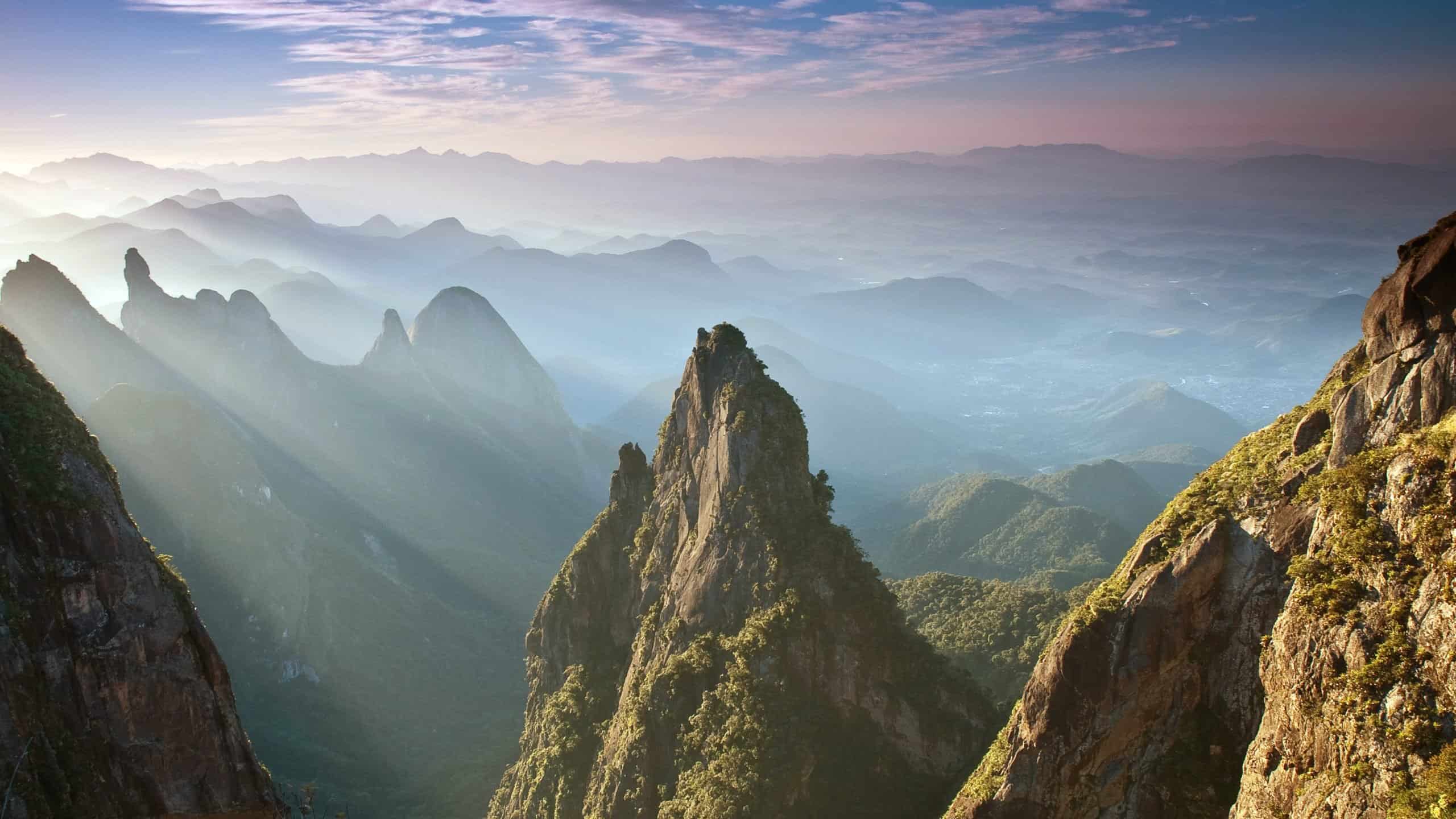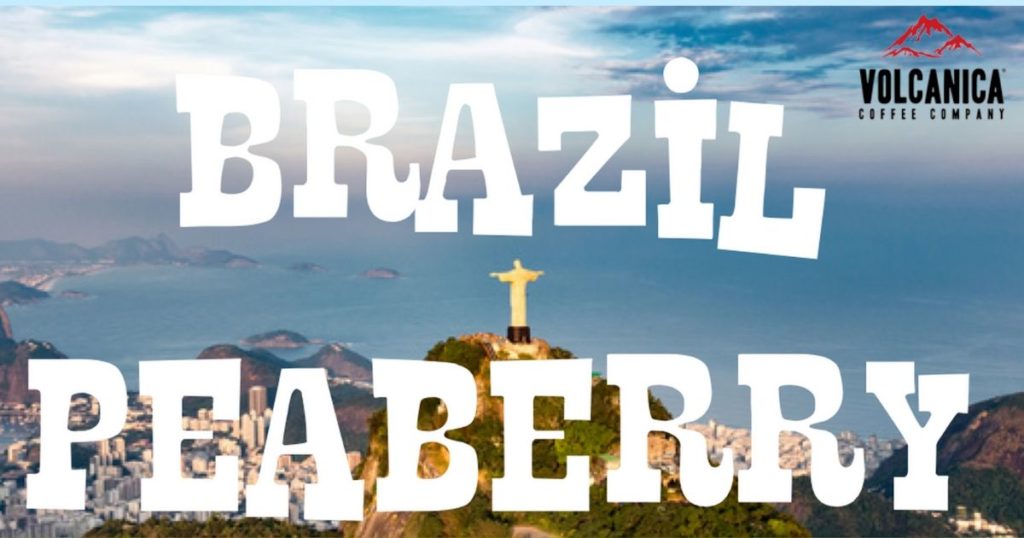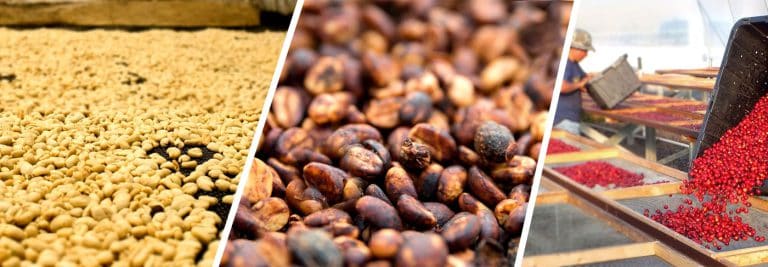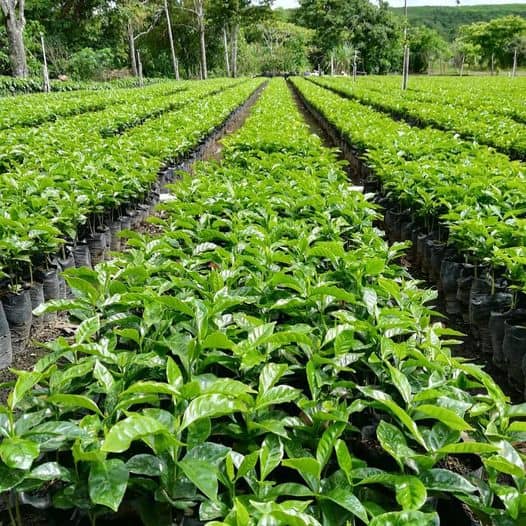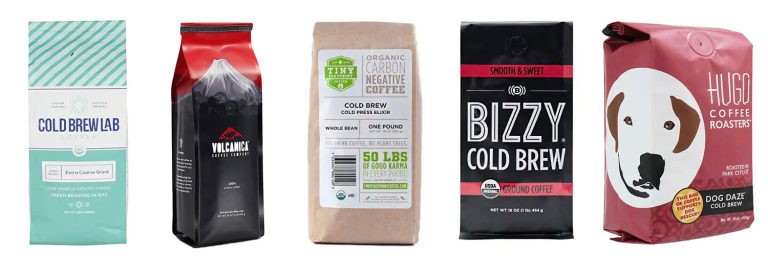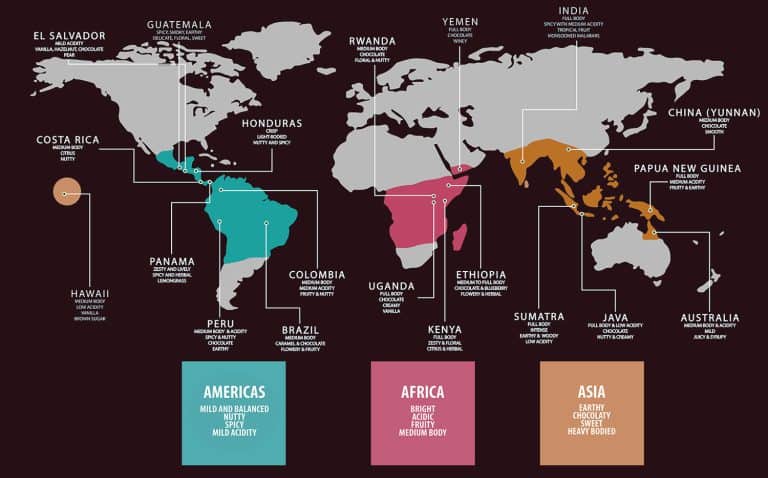Brazilian Coffee: Everything You Need to Know
Are you familiar with Brazilian coffee? Have you experienced what Brazilian coffee tastes like? Is Brazilian coffee stronger than coffee from different regions? What makes Brazil the “King” of coffee exports?
Let’s get to know more about Brazilian coffee that made Americans and other coffee-loving nations fall in love with it. We’ve tried to include everything you need to know about Brazilian coffee.
Coffee Production in Brazil
Brazilian coffee is the world leader in specialty-grade coffee. These gourmet coffee beans are either unwashed (natural) or semi-washed (pulped natural). Such quality coffee growing is achieved because of the kind of climate Brazil has – short periods of rainy days and long periods of sunny days – which is perfect for natural processing within Brazil’s coffee regions.
Brazilian coffee too often gets the “high quantity over high quality” reputation. Yet, this post should prove otherwise.
There’s a lot more to Brazilian beans than sheer volume, and some of the best coffee may still originate in Brazil.
History of Coffee Production in Brazil
Coffee production in Brazil started when Francisco de Melo Palheta planted the first coffee tree in the fertile Brazilian soil of the Para state in 1727. It spread further to the south and reached Rio de Janeiro by 1770. The cultivation of coffee was initially for domestic consumption, but by the 19th century, coffee demand had spiked in the United States and Europe.
Coffee plantations in the states of Rio de Janeiro, Minas Gerais, and São Paulo expanded by 1820, contributing to 20% of world coffee exports. By 1830, Brazil was hailed as the king of coffee exports, with 80% of total coffee production up to the 20th century. To this date, Brazil remains the largest producer of coffee, with three billion tonnes a year!
Brazilian Coffee Beans – A Closer Look
Brazil has a vast array of unique coffee varietals. For instance, Bourbon has two color varieties: the Bourbon Vermelho (red) and the Bourbon Amarelo (yellow).
Most of the Brazilian coffees exported are Mundo Novo varietals, which account for 40% of total coffee exports. It is a hybrid of Typica and Bourbon founded in Brazil in the 1940s.
Caturra is a Bourbon varietal, while the Maragogype is a Typica varietal – both the result of a natural mutation. On the other hand, Catuai is the hybrid of Caturra and Mundo Novo, which was bred in the late 1940s in Brazil, and is a cultivar.
About the Beans
The majority of the beans exported in Brazil are Arabica beans. Coffee companies use 20% of Robusta to make instant coffee, while 80% of Arabica beans are roasted for specialty coffee blends.
Robusta beans are cultivated in the northern part of Brazil because the terrain is flatter. The climate is also hotter there compared with the southern region where most Arabica beans are produced.
In the southern part of Brazil, Minas de Gerais is the home of specialty coffee. In this region, the coffee beans that make up the premium-grade espresso beans are cultivated, including Catuai, Mundo Novo, Obata, and Icatu.
The Taste of Brazilian Coffee
Brazilian coffee is a blend of four coffee beans that are cultivated in the south. Each coffee bean has a distinct taste -described below:
- Catuai (red and yellow) is a high-yield Arabica cultivar from the varietals Mundo Novo and Caturra. It is sweet and has a Bourbon-desired flavor.
- Mundo Novo is a natural hybrid of Bourbon and Typica plants. It’s a coffee plant favorite for its disease-resistant characteristics. It produces higher yields than Bourbon varietal. This coffee bean is characterized as heavy, low acidity, but sweet-toned.
- Obata is the descendant coffee of Mundo Novo and Sarchimor. It is a varietal with quite a lineage. Sarchimor is a mix of Timor and Villa Sarchi. It has a mellow character and hints of floral and honey notes. Obata bean is usually dry-processed.
- Icatu is a crossbreed of Robusta and Bourbon Vermelho. It has recognizable maple syrup, cocoa, and malt flavors, making it a good latte partner.
So, what does Brazilian coffee taste like?
Brazilian coffee beans are characterized by low acidity, a smooth body, and sweet-toned flavors with hints of chocolate and nutty notes. These flavor notes are the result of wet and dry processing used throughout the regions. This variety of processes gives the coffee beans a distinctive taste.
Some regions produce heavy, medium-bodied, fruity, and complex coffee beans with a bit of spice.
Cost
According to Reuters, the current minimum cost of coffee is $91.37 (362.53 reais) per 60-kg bag of Arabica coffee beans, while the cost of a 60-kg robusta coffee bean is $52.96 (210.13 reais).
These are wholesale prices for green beans (not the roasted coffee in the hands of your favorite barista). For Congressman Evair de Melo, the current minimum price doesn’t meet the coffee farmers’ needs. Thus, Brazil will reassess its methodology in setting the government’s “minimum guarantee prices for coffee.”
Quality & Standards
The business interest groups in Brazil helped raise and maintain the quality of Brazilian coffee by imposing standards. For instance, the Commercial Association of Rio de Janeiro (ACRio) established the sixty-kilogram bag as the standard for meeting the exporters’, factors’, and sackers’ demand. This bag standard was first imposed between 1872-1873 in an attempt to convert Brazil to the metric system.
Other certification standards are as follows:
- Rainforest Alliance (RA) Sustainable Agriculture Network (SAN) or SAN/RA
- FairTrade
- UTZ (merged with Rainforest Alliance)
- Organic
- Brazilian Coffee Sustainable Seal (Cecafe)
Processing Methods
Coffees in Brazil are processed in any of the following methods: wet (washed), dry (natural), and semi-washed (pulped natural).
- Dry (natural): The coffee cherries are placed in the water, and those floating are removed. The remaining coffee cherries are dried in concrete slabs. The coffee beans in this process are heavy-bodied, sweet, smooth, and complex.
- Wet (washed): This process is used to remove the four layers surrounding the coffee bean. It is done in small portions. The coffee beans using this method are cleaner, more vibrant, and fruitier.
- Pulped Natural (semi-washed): This method involves pulping the coffee but skipping the fermentation phase to remove the silver skin. Thus, the coffee beans in this method gain the characteristics of coffee beans, which had undergone the dry and wet processes.
Another method that is emerging in coffee processing is called re-passed (raisins). In this process, the coffee cherry floaters -typically coffee beans that have dried on the tree- float to the surface and are then discarded from the rest. The coffee beans in this method are much sweeter than the traditional pulped coffee and may prove to be marketable.
What is Brazil Santos?
To avoid misconception, Brazil Santos is not a coffee varietal but a grading term for Brazilian coffee. The name is actually a port’s name where the coffee is usually transported and is regarded to have a higher quality than the “Brazilian coffee.” But such coffee is a Bourbon variety.
It is a medium to high-quality coffee that is processed using the wet (washed) method. This coffee from the Bourbon varietal plant is fruitier and more vibrant (high acidity) compared to other coffees in Brazil. The Bourbon Santos with low acidity is usually produced from regions with low growing elevations but has the highest quality among different coffees in Brazil.
Best Coffees from Brazil
Aside from Minas Gerais, other major coffee-producing states in Brazil include:
- Sao Paulo is famous for Mogiana coffee beans which are rich and full-bodied with low acidity and hints of fruitiness and chocolate; and the mild Centro-Oeste de Sao Paulo coffee beans.
- Espirito Santo is known as the largest Robusta beans producer in Brazil, with its most famous coffee being the Montanhas do Espirito Santo which has high acidity and a “fruit-forward” flavor profile.
- Bahia is the newest state in Brazil to grow coffee in the 1970s, and Arabica beans are mostly grown in this state. The most popular coffee in this state is the Cerrado and Planalto da Bahia which usually has a sweet flavor profile.
Estate Blends from Brazil
Coffees in Brazil coffee farms are the No.1 source for espresso and estate blends because of their distinct flavor profiles. For instance, Volcanica Coffee sources its Brazilian coffee from the regions of Bahia, Espirito Santo, and Minas Gerais. The coffee beans produced from these regions have flavor profiles of rich, chocolatey, and nutty notes with medium acidity.
The Yellow Bourbon coffee of Volcanica is produced from a coffee farm in Sao Sebastio da Grama in the regions of Minas Gerais. The coffee has a full body and is pleasantly mild with a slight acidity. It’s a remarkable coffee for its sweet, mellow flavor and rich aroma.
Another estate coffee worth tasting is Volcanica’s Brazil Peaberry. It has a creamy body that is bold and complex. It’s a good cuppa to try because of its nutty, sweet hazelnut flavor with raspberry hints that can awaken your senses.
How to Get Brazilian Coffee?
Volcanica Coffee Co.
Volcanica gets its specialty coffee from coffee farms in different regions where coffee plants are cultivated in fertile volcanic soil. Their Brazilian coffee is directly sourced from SAN/RA, FairTrade, and Shade-Grown certified coffee farms. So if you’re craving a Brazilian estate blend, peaberry, decaf, or flavored coffee, you can visit their official website.
Subscriptions
Coffee from Brazil is also a favorite single-origin pick from the coffee subscription.
Check out our list of the 25 best coffee subscriptions that offer both single-origin and estate blends from Brazil.
Coffee Producing Regions in Brazil
The total land area of coffee plantations in Brazil is comparable to the total land area of Belgium.
Most coffee plantations are located in the cooler, and higher altitudes in the states of Minas Gerais and São Paulo, where Arabica coffee plants’ varietals are cultivated.
Brazilian coffee is diverse. It’s a mixture of different coffee beans from the fourteen major coffee-producing regions spread throughout the states in Brazil. If you’ll take the time to check the labels of the coffee bags. Most of the coffee is from:
- Minas Gerais
- Sao Paulo
- Espirito Santo
- Bahia
- Parana
- Rondonia
- Rio de Janeiro.
Yet, during the 2014/15 biennium, the micro-regions in Minas Gerais, Rondonia, Bahia, and Espirito Santo became the significant producers of specialty coffee, contributing 80% of total coffee production.
The sub-regions of Minas Gerais are responsible for 50% of the total coffee production in Brazil, and 60% of it comes from independent, small coffee farms. The coffee bean varieties cultivated in these regions are:
- Catuai
- Obata
- Icatu
- Mundo Novo
Meanwhile, the four major producing regions in Minas Gerais of Brazilian coffee beans are:
Cerrado de Minas
The Cerrado de Minas holds the Cerrado Mineiro status, a distinction given to the famous coffee-producing state in Brazil.
- Coffee beans produced in this region: Mundo Novo and Catuai
- Coffee beans’ cup notes: delicate citrus acidity, medium in body, and sweetness.
- Coffee beans’ flavor notes: aromatic notes of caramel and nuts with a chocolatey finish.
Chapada de Minas
The Chapada de Minas consists of interspersed valleys, which makes it suitable for mechanized coffee productions. Most of the coffee in this region is naturally processed, where the water is recycled in efforts to support sustainability.
- Coffee beans produced in this region: Catuai and Mundo Novo
- Coffee beans’ cup notes: high in acidity, falls middle in sweetness and body.
Matas de Minas
Matas de Minas is in the southern region of Minas de Gerais. The coffee beans are handpicked and dried on paved patios.
- Coffee beans produced in this region: Mundo Novo and Catuai (red and yellow)
- Coffee beans’ cup notes: delicate to balanced acidity, medium to full body
- Coffee beans’ flavor notes: Sweet-toned and citric with hints of caramel and chocolate notes
Sul de Minas
The average altitude in the region of Sul de Minas is 950m (, and it has a mild annual temperature of 22 degrees Celsius. This region produces 30% of the total coffee beans in Brazil and has a distinct cupping and flavor profile.
- Coffee beans produced in this region: Catuai, Obata, Icatu, Mundo Novo, and Catuai Rubi.
- Coffee beans’ cup notes: Slightly citric, full-body, and fruity aroma
- Coffee beans’ flavor notes: fruity, chocolatey, and honey-like sweetness.
Unique Things about the Coffee Industry in Brazil
Coffee production in Brazil had undergone significant changes with government intervention, where the coffee sector was forced to reinvent itself to meet the demands and the standards of the coffee market. Such changes are:
- Adopting innovative production techniques in coffee production systems to improve coffee farms’ competence in product quality differentiation and cost reductions.
- Creation of internal management mechanisms to achieve client satisfaction and trust rates.
- Selective coffee production in regions with favorable climates for coffee cultivation
- Inclusion of coffee producers in the specific consumer market
- Production and marketing of coffee with the seal of quality and geographical certifications.
Workers’ Equity
Brazil has become the lead model when it comes to eradicating modern labor slavery. The country is proactive with its “progressive, creative, multifaceted and multisector campaign” through multilateral organizations involved in eliminating modern slavery.
The campaign is in partnership with the United Nations International Labor Organization (ILO), governments that include the United States, and the leading NGOs that specialize in slavery and human trafficking issues.
Likewise, steadfast adherence to the FairTrade standards and guidelines is strictly implemented by the coffee industry’s governing bodies to protect the rights of coffee farmers.
Export Incentives
The REINTEGRA program is a tax amnesty program for exporters of manufactured goods in Brazil. It entitles exporters to a tax refund percentage of the value of their export goods. However, on a published and rectified decree, the “Reintegra” tax benefit was reduced from 2% to 0.1% for 2018.
Who Buys This Coffee and Why?
According to CECAFE, the worldwide consumption of coffee increases by 2% every year. The regions with high demand for coffee from Brazil came from Asia and Oceania with 4.2%. By nation, the United States remains the leading Brazil coffee importer with 17.6% of total exports (approximately 6.2 million bags).
When it comes to overall coffee consumption regardless of coffee beans source, Finland and Sweden remain the top coffee drinkers. Sweden consumes 10kg of coffee per person per year while a Finland native drinks 12.5kg of coffee per year.
Frequently Asked Questions (FAQs)
Here are some questions you may have about Brazilian coffee. If there is anything left unanswered, please let me know in a comment.
Conclusion
Is Brazilian coffee underrated or overrated? One thing is sure: Brazil will continue reinventing itself to meet the increasing demand for excellent-tasting coffee.
From the day Francisco de Melo Palheta planted the coffee bean in 1727 to 60 million bags of coffee exported this year, Brazil kept its promise to keep people caffeinated. Interventions of the Brazilian government from coffee production to tax amnesty programs only show that coffee is one serious business. Ultimately, Brazil will take on any challenge headstrong to keep its throne as the king of coffee.
Have you tried any specialty-grade coffees from Brazil? What’s your tasting experience with Brazil’s Arabica coffees? Is there a Brazilian specialty-grade coffee that you can recommend? Share with us your Brazilian coffee thoughts in the comments below.

